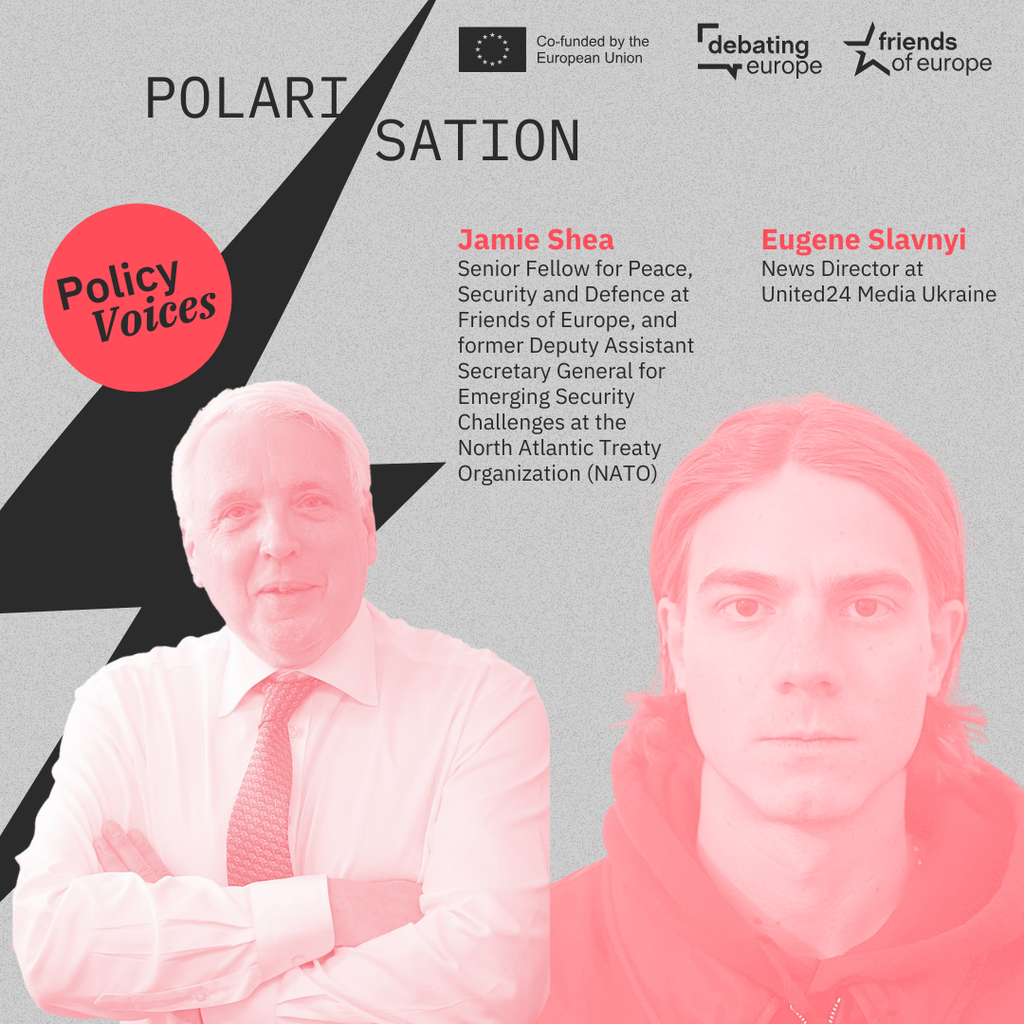From ambition to action: building Europe’s Defence Union
Past event In person

- Area of Expertise
- Peace, Security & Defence
Climate, Energy & Natural Resources

Governance and Partnership Officer at Friends of Europe
As the threat of climate change continues to grow, it’s time to confront an inconvenient truth: the military, often overlooked in climate discussions and vice versa, plays a significant role in global emissions. The defence sector accounts for 5.5% of worldwide emissions according to the Conflict and Environmental Observatory, and to make matters worse, military emissions are not systematically included in the NDCs. Thus, while a large proportion of global emissions, defence is not part of the reduction targets set by the UNFCCC.
As a self-proclaimed climate-conscious region, Europe lacks a committed climate agenda within its defence policies that mirrors the urgency of the fast-approaching 1.5-degree global temperature rise. This is even more poignant as European military spending was at $480bn in 2022, a 13% rise from the prior year (SPIRI), thus setting the course for increased defence emissions.
While emissions are not systematically recorded across countries at the national and European levels, the connection between climate change and security has been recognised. Climate change is acknowledged as a threat multiplier and proactive measures are taken to prepare critical infrastructure to better withstand and adapt to the effects of climate change. But what remains omitted or relegated to a small part of the discourse is the defence department’s emission. It is an oxymoron to tackle climate change in every sector and use armies to respond to climate disasters but not address the emission of its own making.
The problem is fundamental: a political will to set reduction targets and methodically report military emissions. The EU and NATO have made political commitments to reduce greenhouse gases in the defence sector per the 2030 goals, but as it so often follows, this has not materialised in actual targets nor been reflected across all national militaries as the defence is still a national-owned domain
As of 2023, ten NATO member states have published climate defence reports. Even with some open-data sources, countries seldom report Scope 3 emissions from supply chain and procurement, which are responsible for the majority of the defence sector’s emissions. Any attempt to increase transparency has been blocked, even at the European Parliament, citing ‘security or operational concerns’.
Beyond the lack of transparency, over the past decade, the discussion around climate defence in Europe has shifted from a low whisper to a clearer sound. From extensively used hybrid vehicles and tanks to the REPowerEU strategy, Europe has produced strategies and made investments in low-carbon materials.
The latest EEAS and EDA proposal, The Climate Change and Defence Roadmap, aims to make the EU fit to address the ‘double challenge’ of climate change insecurity and adapting and investing in greener technologies. The latest EDA annual report, from 2023, illustrates the progress made thus far, from workshops on reducing the carbon emissions of defence installations to increased use of circulatory materials. The EU has taken a positive step towards mitigating the impact of climate change by pledging the defence sector to work towards achieving the 2050 climate goals.
Similarly, at NATO, Secretary General Stoltenberg remarks that there is no alternative but to go green. The Climate Change and Security Action Plan, adopted in 2021, refers to climate resilience, but it also aims to release emission data with a strong methodology framework. This was followed by the reporting of NATO missions’ emissions and in 2023 the annual reports also included the emission data and target goals of its member states (to varying degrees)
However, not only have the progress and strategies come a little too late, as global temperatures are rising, but they have become outdated as the European defence environment has moved from crisis management to defence development. Thus, there is a growing need to prioritise investments in low-carbon technologies and supply chains. Even so, the climate defence debate continues to focus on the consequences of climate change (adaptation) and energy transition rather than mitigation.
The energy sector has seen the most movement as Europe is a big consumer of electricity and gas, but also forcible due to the fallout of Russian energy interdependence following the full-scale invasion of Ukraine. The REPowerEU has merged geopolitics with the Green Deal, intending to diversify European energy sources, reduce energy consumption and produce clean energy. Although the plan has been largely successful, it has been but a temporary fix which the EU is struggling to turn into a long-term plan that is green not only for Europe but also for all its partners.
A more comprehensive policy is needed for European energy diplomacy and for the overall European climate-defence strategies. Reducing emissions and investing in green technology are still not prioritised and are relegated to ‘mainstreaming’
A clear example is the recent EU European Defence Industry Strategy (EDIS) which lays the plan for boosting technological investment and supporting a coordinated European defence industry. In communicating this strategy, little effort was made to link it to the Green Deal. This omission is a missed opportunity for a strategy that focuses on supply chains of military weapons and products. It also speaks truth to the largely political statements about climate ambitions and the lack of concrete policies. But whilst the strategy refers to countless defence projects (e.g. EIP, ETIB), they too still focus heavily on energy or political statements under mainstreaming.
The Green Path Forward
Current and future defence and security strategies should align themselves with the Green Deal that goes beyond mainstreaming. It begins with setting ambitious targets that align with the 2030 and 2050 goals, which require transparency (emission reports). This will lead to greater analysis, pinpointed policies and create synergy between sectors. The concerns of security are less likely when military spending data is more readily available. More so, if the United States leads in carbon emission data, then so too can European institutions and EU Member states.
Although data is lacking to accurately judge the state of investment in greener technologies and mobility in the defence sector, this will be both the key and the biggest hurdle to reducing climate emissions. This could be included in the two-percent NATO hurdle and could incentivise increased military spending from reluctant member states. The momentum to align industries and develop a strategic autonomous European defence sector should come with equal considerations of green investments and other standards like human rights and alignment with the Arms Trade Treaty.
Going green is a strategic option that reduces dependency on other countries’ resources. It provides militaries with a greater advantage and reduces purchasing costs. Dual-use technologies can benefit both the military and civilian sectors. Essentially, if in the future militaries cannot operate due to climate disasters or cannot work with other sectors and technologies as they become less fuel-fuelled, then the military will be incompetent
This also includes having a more strategic energy and resource policy that not only moves from one dependency to the next, but also considers the climate and human rights policies of partnering countries. For example, the EU’s need for LNG terminals in 2021 derailed the plan of other countries like India to use LNG for their energy transition.
In addition to the strategic imperative of embracing environmentally friendly practices, it is worth examining Europe’s role as a climate leader. It is concerning that the defence industry has been largely excluded from emission reduction targets, despite its significant environmental impact, exceeding even Japan’s total emissions. For Europe to truly be a proactive climate actor, climate considerations must be integrated into all policies and strategies. This is particularly pertinent now given the pivotal role defence plays in European security and the ongoing questioning of Europe’s identity.
Embracing climate ambition alongside defence concerns can reinforce Europe’s commitment to sustainability and resilience in the face of geopolitics. As French President Macron says, Europe is mortal, but more from failing in its commitment to its values and death by climate change.
The views expressed in this #CriticalThinking article reflect those of the author(s) and not of Friends of Europe.
Past event In person

Next event

Past event Online

Past event Online





Stay informed
We use cookies and similar technologies to adjust your preferences, analyze traffic and measure the effectiveness of our campaigns. Learn more about our privacy policy.